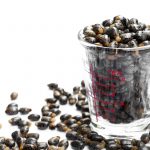Childhood Infections & Injuries: Topical Herbal Formulas
Jillian Stansbury, ND
No one escapes childhood without some scrapes, burns, bruises, and infections. Every herbalist and family physician needs a supply of gentle but effective topical applications for lice, burns, and other common issues. Most readers will be familiar with all-purpose wound-healing agents such as Calendula and Symphytum, both useful as tinctures and teas to apply to cuts and abrasions, as well as Hypericum and Arnica to use for extensive bruising, sprains, strains, and injuries to highly innervated areas such as fingers and toes. It is most useful to have such agents in the home for immediate use, so physicians might offer such remedies to parents at early pediatric wellness checks, so that the home medicine chest can be well prepared. Following are a few ideas and formulas to consider, both to use acutely when needed and to keep on hand. Preparing a small first aid kit with instructions, and going over them with the patient, is a worthy goal for an office visit.
Home First-Aid Staples for Topical Use
- Aloe vera gel – Whether a potted plant in the kitchen window for minor kitchen burns, or a bottle of Aloe vera gel, the thick demulcent liquid is easy to keep on hand
- Epsom salt – Useful for soaks for strains and sprains, but will also calm down a tense and restless child, helping them to wind down for bed
- Iodine – Useful for disinfecting wounds. Use as a skin wash, or place a few drops on a Band-aid. Especially indicated for suppurative wounds.
- Essential oils – Essential oils store and travel well. Lavendula (lavender) essential oil can help allay the pain of burns; mint oil can allay itching; clove oil can help teething babies; tea tree oil is appropriate for many topical wounds and infections.
- Calendula salve – Useful for everything, including diaper rash, chapped lips, and abrasions
- Hypericum oil – For bruises, strains, and sprains. Also helpful for neuralgic pain such as cold sores.
Burn Spray
This formula uses Aloe gel and thins it down with witch hazel liquid so that it can be used in a spray bottle (which is much more comfortable on burns than applying compresses). The addition of lavender oil offers antimicrobial, anodyne, and calming effects.
- Witch hazel liquid: 1.5 parts
- Aloe vera liquid: 0.5 parts
- Lavendula essential oil: 100 gtt
Place in a 2-oz bottle with a spray nozzle, and use frequently on burned skin.
Throat Pain Spray
This variation on the classic HEMP formula* adds licorice solid extract, thins it down with Echinacea and Myrrh and Phytolacca tincture, and places all in a spray bottle. While it is difficult to give children the strong-flavored HEMP formula, it is fairly easy for parents to spray infected throats and tonsils with this formula, and to follow with a “chaser” in the form of water or herbal tea. The addition of the mint essential oil improves the flavor and offers additional pain relief.
- Echinacea glycerite: ½ oz
- Glycyrrhiza solid extract: ½ oz
- Myrrha tincture: ½ oz
- Phytolacca tincture: ½ oz
- Mentha essental oil: 40 gtt
Place in a 2-oz bottle with a spray applicator and spray on the back of the throat hourly, reducing frequency as symptoms improve.
*HEMP formula = Hydrastis, Echinacea, Myrrha, Phytolacca
“Pink Eye Formula” – Eyewash for Acute Conjunctivitis
The isoquinoline-containing alkaloidal herbs – Mahonia, Hydrastis, Coptis, and Phellodendron – make excellent eyewashes, as they are so specific for purulent infections of mucous membranes and are very effective for eye injections. Hydrastis is complemented in this formula by Calendula for its soothing and healing anti-inflammatory ability, and Euphrasia for its anti-allergy ability. These are placed in a base of rose water in this example, although Althea or Symphytum could also serve. Rose water alone may suffice for simple irritated eyes, such as when children spend hours in chlorinated pools and develop a chemical, rather than infectious, conjunctivitis.
- Hydrastis powder: ½ oz
- Calendula flowers: ½ oz
- Euphrasia leaves: ½ oz
- Rose water: 4-oz bottle
The Hydrastis powder will cling to the Calendula petals and Euphrasia leaves, and all should be mixed well and stored in a Ziplock bag. Steep 1 heaping tbsp of the herbal mixture in 1 cup boiled water for 15 minutes, strain through a wire mesh or other strainer, and then a second time through a coffee filter to remove all particulate. Combine ½ ounce of the infusion with ½ ounce of rose water, and administer to the eyes using an eyecup, or instill in the eyes with the aid of an eye dropper. Repeat every 1-2 hours, and discard any unused infusion at the end of the day, making it fresh each day.
To Allay Itching of the Skin
This simple formula is simply diluted essential oil. Mint oil is highly effective to alleviate itching due to bug bites, poison oak, or chickenpox lesions.
- Mentha essential oil: 5 mL
- Water: 25 mL
Place in a 1-oz bottle and spray on affected area frequently.
Supportive Topical Application for Impetigo
Impetigo is due to a Streptococcal infection in the skin; it is considered highly contagious. The condition is fairly easy to diagnose, given the characteristic yellowish crusts that overlie wet, raw, inflamed skin. While systemic antibiotics are the standard approach, and for extensive cases may be prudent in order to reduce the likelihood of post-Streptococcal autoimmune issues, herbal antimicrobials from berberine or Curcuma to commercial formulas may be alternative approaches. The following topical formula, featuring astringent antibiotic herbs, can complement internal antimicrobials.
- Quercus powder: 2 oz (to blend & use 2 tsp/application)
- Calendula powder: 2 oz (to blend & use 2 tsp/application)
- Achillea powder: 2 oz (to blend & use 2 tsp/application)
- Tea tree essential oil: Add 10 gtt to each preparation
- Oregano essential oil: Add 10 gtt to each preparation
- Iodine: Add 5 gtt to each preparation
Steep 2 tsp of the combined powders in a cup of hot water. Add 10 gtt of tea tree and oregano essential oils and 5 gtt of iodine. Soak a sterile gauze pad or simple soft cloth in the liquid and apply.
Hand Soak for Paronychia
Nail bed infections can be due to Pseudomonas or Proteus bacteria, or due to fungi and an outward manifestation of candidal intestinal dysbiosis. The home medicine chest standards of Epsom salt, iodine, and tea tree essential oil are combined in the formula to treat paronychial infections. Severe purulence under the nail bed may necessitate incision, but often Epsom salt soaks and systemic immune support such as Echinacea are highly effective. The use of hot Epsom salt soaks, minimum TID, and twice as often if possible, is advised. Topical iodine on the nail bed or in the Epsom salt soak is also helpful, as are tea tree oil or oregano oil topically or as a compress.
- Epsom salts (magnesium sulfate): 1 cup
- Hot water: 4-5 cups
- Iodine solution: 20 gtt
- Tea tree oil: 20 gtt
Soak affected hand in a pot filled the above combined ingredients for 10-20 minutes. Allow hand to fully air-dry. Apply 1-2 gtt iodine to affected nail, and bandage for several hours. Allow affected nail to get adequate air for many hours each day; do not bandage full-time.
Topical Formula or Scabies
The scabies mite, Sarcoptes scabiei, creates inflammation and often severe itching as it lays its tiny eggs in the superficial burrows in the skin, most typically the hands and the wrists. The intertriginous regions may also be affected. Thin, scabby, wavy lines in the skin are characteristic of the condition; however, once a person has scratched for a few days, these typical lesions may become obscured. The pesticide-like medication lindane is used allopathically, but many naturopathic physicians prefer sulphur and tea tree preparations, due to concerns over the toxicity of the pharmaceuticals. Furthermore, some clinicians are reporting lindane-resistant mites.
As the mite may simply migrate to untreated areas, essential oils, sulphur, and medication may need to be applied to the entire body. Sulphur soap has been on the market for several hundred years, and may be a fairly easy remedy to use in the shower, twice a day, and followed with a topical application, such as what follows. Sulphur ointments are also commercially available, or may be prepared in the office by stirring pure sulphur powder in oil and beeswax, or lanolin, or other base. As the mite does not survive long off the body, extensive laundering and cleaning is not necessary, as is the case with lice.
- Allium oil: 3 oz
- Tea tree essential oil: 1/3 oz
- Oregano essential oil: 1/3 oz
- Lavendula essential oil: 1/3 oz
Bathe in the morning and evening with Sulphur soap, then apply the oil on every inch of skin. Repeat mid-day, or after work, and before bed.
Topical Remedy for Head Lice
Head lice (Pediculosis capitis) are common among school children, and often spread quickly among classmates, and then to their families. Lice are able to live a short time off the body and thus can easily spread when a group of children hang their coats and backpacks together, or share coats and hats. Because heat will kill lice, parents might be advised to put all hats, coats, and backpacks in the dryer on high heat for 10 or 15 minutes every day after school, when it is known that lice is going around the community. When the home becomes infected, it may become necessary to launder all stuffed animals, pillows, sheets, blankets, and clothing, or at least placed in the dryer each day.
Essential oils are effective for head lice when applied topically to the scalp and covered with a plastic bag and towel wrap and left in place for 15-30 minutes, repeating daily for 2 or 3 days. Essential oils that are effective against head lice include tea tree, peppermint, lavender,1 thyme, cinnamon,2 eucalyptus,3 Eugenia,4 Mentha pulegium,3 and/or oregano. No essential oils should contact the eyes, and I prefer tea tree and/or oregano, as thyme, cinnamon, and Eugenia are too strong to use directly on the skin or scalp. Tea tree, oregano, peppermint, and lavender are usually well-tolerated, but may cause some tingling or even a slight burning sensation; these may be diluted if uncomfortable for sensitive individuals. Following application, a weak vinegar and water rinse can loosen the nits so that they may be washed or shampooed away.
- Oregano essential oil: 2 mL
- Lavendula essential oil: 3 mL
- Tea tree essential oil: 3 mL
Combine essential oils in a 1-oz bottle and apply 10-20 gtt to freshly-washed hair – less for very short hair, more for very long, thick hair. Massage in thoroughly, close to the scalp, being careful not to scratch or injure the skin in any way, which can increase the chances of irritation or inflammation.
Topical Therapies for Warts
While most warts are benign and a mostly cosmetic concern, some warts are associated with malignant transformations and must therefore be treated aggressively. The most common childhood warts are Verruca vulgaris lesions of the hands, which even the Merck Manual says are susceptible to hexing and will often resolve spontaneously without treatment. While all warts are due to underlying viruses, the underlying terrain is as important as the contagion. Topical applications, such as this formula, can be highly effective; it may also be necessary to support a child’s immune system and to consider the child’s diet and nutritional status. Antiviral herbs, such Hypericum, Lomatium, Allium, and Melissa, might be used in tinctures or teas to support the immune system. For those with weak immune systems who experience all manner of infections including warts, Panax, Eleutherococcus, or Astragalus might be useful additions to the formulae.
Topical therapies for warts consist of various caustic applications that kill viruses as well as ablate the actual warty lesion. Naturally acidic compounds, such as 15-20% salicylic and lactic acid solutions, may be effective. I have had good success with the resin of the mayapple plant, Podophyllum peltatum. While the resin (podophyllin) is potentially caustic, most people tolerate it well, and the dry powder may be mixed with sticky tincture of benzoin to hold it in place. Several mechanical options exist for ablating warts, eg, cryosurgery and electrocautery, both of which are highly effective but painful and traumatic, especially for children.
- Dry podophyllin resin: 30 mg
- Tincture of benzoin: 30 mL
The podophyllin mixture can be applied topically and washed off around 4-5 hours later to prevent possible irritation or inflammation. For small warts, a single application in the doctor’s office is often adequate, with the wart drying up and flaking away over several weeks’ time. Large or stubborn warts may require application every 3 days or so, taking a break if at any time redness or irritation occurs. While Podophyllum may be used carefully on genital warts, it is not recommended during pregnancy, due to teratogenicity concerns. Mix the 2 ingredients thoroughly and place in half-dram or 1-dram bottles. Protect surrounding skin with Calendula salve, and use a Q-tip to apply to warts.
Antiviral Tincture for Warts
The topical application listed above may be complemented with an antiviral tincture for those with extensive cases, and/or other frequent infectious illnesses.
- Hypericum: 10 mL
- Echinacea: 10 mL
- Melissa: 10 mL
- Astragalus: 10 mL
- Phytolacca: 10 mL
- Calendula: 10 mL
This 2-oz formula is taken as 1 tsp 3-5 times daily.
 Jillian Stansbury, ND, has practiced in SW Washington for nearly 20 years, specializing in women’s health, mental health, and chronic disease. She holds undergraduate degrees in medical illustration and medical assisting, and graduated with honors in both programs. Dr Stansbury also chaired the botanical medicine program at NCNM and has taught the core botanical curricula for more than 20 years. In addition, Dr Stansbury writes and serves as a medical editor for numerous professional journals and lay publicans, plus teaches natural products chemistry and herbal medicine around the country. At present, she is working to set up a humanitarian service organization in Peru and studying South American ethnobotany. She is the mother of 2 adult children, and her hobbies include art, music, gardening, camping, international travel, and the study of quantum and metaphysics.
Jillian Stansbury, ND, has practiced in SW Washington for nearly 20 years, specializing in women’s health, mental health, and chronic disease. She holds undergraduate degrees in medical illustration and medical assisting, and graduated with honors in both programs. Dr Stansbury also chaired the botanical medicine program at NCNM and has taught the core botanical curricula for more than 20 years. In addition, Dr Stansbury writes and serves as a medical editor for numerous professional journals and lay publicans, plus teaches natural products chemistry and herbal medicine around the country. At present, she is working to set up a humanitarian service organization in Peru and studying South American ethnobotany. She is the mother of 2 adult children, and her hobbies include art, music, gardening, camping, international travel, and the study of quantum and metaphysics.
References
- Canyon DV, Speare R. A comparison of botanical and synthetic substances commonly used to prevent head lice (Pediculus humanus var. capitis) infestation. Int J Dermatol. 2007;46(4):422-426.
- Yang YC, Lee HS, Lee SH, et al. Ovicidal and adulticidal activities of Cinnamomum zeylanicum bark essential oil compounds and related compounds against Pediculus humanus capitis (Anoplura: Pediculicidae). Int J Parasitol. 2005;35(14):1595-1600.
- Toloza AC, Zygadlo J, Cueto GM, et al. Fumigant and repellent properties of essential oils and component compounds against permethrin-resistant Pediculus humanus capitis (Anoplura: Pediculidae) from Argentina. J Med Entomol. 2006;43(5):889-895.
- Yang YC, Lee SH, Lee WJ, et al. Ovicidal and adulticidal effects of Eugenia caryophyllata bud and leaf oil compounds on Pediculus capitis. J Agric Food Chem. 2003;51(17):4884-4888.










